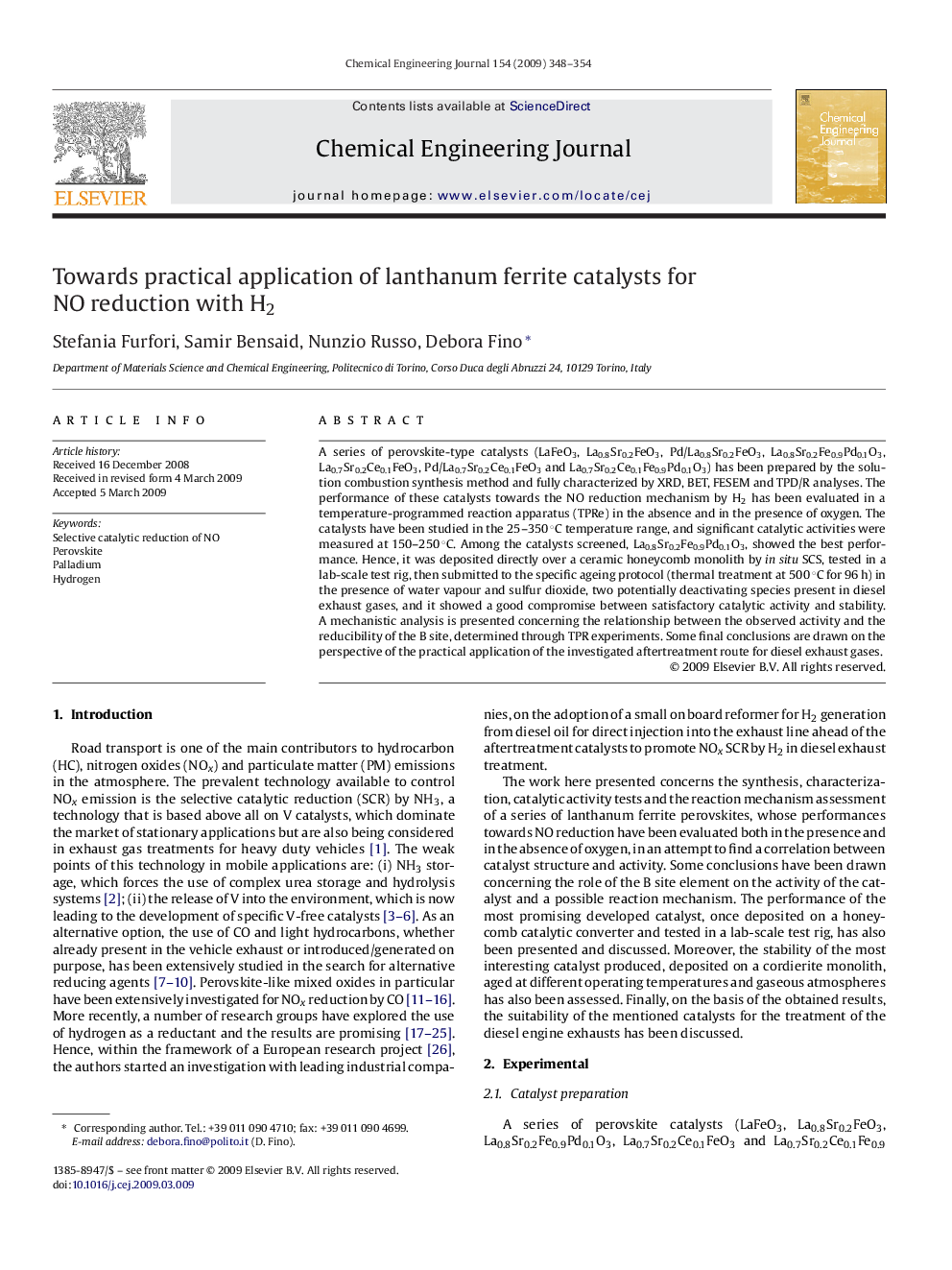| Article ID | Journal | Published Year | Pages | File Type |
|---|---|---|---|---|
| 153558 | Chemical Engineering Journal | 2009 | 7 Pages |
A series of perovskite-type catalysts (LaFeO3, La0.8Sr0.2FeO3, Pd/La0.8Sr0.2FeO3, La0.8Sr0.2Fe0.9Pd0.1O3, La0.7Sr0.2Ce0.1FeO3, Pd/La0.7Sr0.2Ce0.1FeO3 and La0.7Sr0.2Ce0.1Fe0.9Pd0.1O3) has been prepared by the solution combustion synthesis method and fully characterized by XRD, BET, FESEM and TPD/R analyses. The performance of these catalysts towards the NO reduction mechanism by H2 has been evaluated in a temperature-programmed reaction apparatus (TPRe) in the absence and in the presence of oxygen. The catalysts have been studied in the 25–350 °C temperature range, and significant catalytic activities were measured at 150–250 °C. Among the catalysts screened, La0.8Sr0.2Fe0.9Pd0.1O3, showed the best performance. Hence, it was deposited directly over a ceramic honeycomb monolith by in situ SCS, tested in a lab-scale test rig, then submitted to the specific ageing protocol (thermal treatment at 500 °C for 96 h) in the presence of water vapour and sulfur dioxide, two potentially deactivating species present in diesel exhaust gases, and it showed a good compromise between satisfactory catalytic activity and stability. A mechanistic analysis is presented concerning the relationship between the observed activity and the reducibility of the B site, determined through TPR experiments. Some final conclusions are drawn on the perspective of the practical application of the investigated aftertreatment route for diesel exhaust gases.
